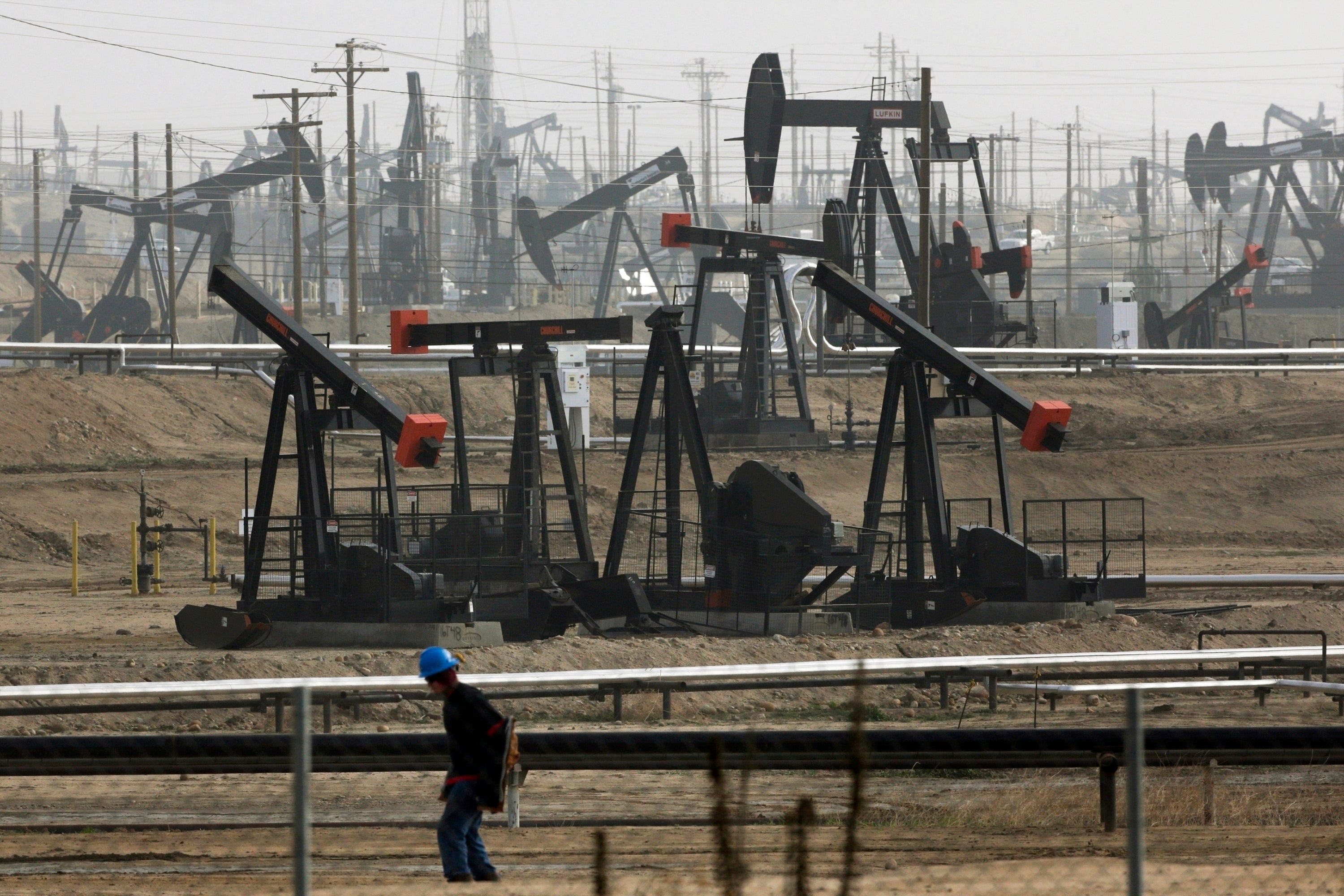What is fracking and why is the practice so controversial?
Shale gas extraction technique regularly attacked by environmentalists over concerns it destablises earth and pollutes groundwater
The UK’s new prime minister Rishi Sunak has reimposed the ban on fracking controversially lifted by Liz Truss, concluding that it was at odds with Britian’s climate commitments.
“I stand by the manifesto on that,” Mr Sunak told MPs in the House of Commons in his first full day in the job, referring to the 2019 moratorium on drilling for shale gas and tearing up the last of Ms Truss’s discredited “growth, growth, growth” programme in the process, her policy on the issue having served only to anger her own MPs, energy experts and green activists.
Fracking is short for hydraulic fracturing and refers to the practice of drilling deep down into the earth to extract shale gas and oil from porous subterranean rock formations by blasting them with a mixture of water, sand and chemicals at high pressure.
A vertical wellbore is drilled as far as two to three kilometres below ground, turned horizontally and steered to reach the target formation before the liquid mixture is injected into the earth at speed via a perforating gun.
This bursts open existing fissures in the rock and allows the gas to be withdrawn, the sand contained within it serving to hold open the cracks and prevent resealing as the fuel rises upwards through the wellhead to the surface for containment.
Why are environmentalists concerned?
While the practice, which dates back to at least the 1860s, enables energy firms to access and exploit hard-to-reach resources and creates jobs, it has been the target of regular protests by green activists as another example of finite fossil fuels being exhausted when renewable energy alternatives should be being prioritised in the interests of sustainability and arresting the progress of climate change.
They also argue that force of the injection involved in fracking can do lasting damage to the underground rock, undermining ground stability to the point of causing tremors or even earthquakes, and object to the sheer amount of water usage required.
They also point to the use of caustic chemicals in the drilling process, which threatens to contaminate water supplies, and to the wastewater and air pollution produced as by-products of the practice.
“We need a 21st century energy revolution based on efficiency and renewables, not more fossil fuels that will add to climate change,” Friends of the Earth campaigner Tony Bosworth has told the BBC.
What is the state of it in the US and UK?
Ms Truss’s ambitions for the sector were instantly unpopular and ran contrary to the 2019 Conservative manifesto pledge, which read: “We placed a moratorium on fracking in England with immediate effect. Having listened to local communities, we have ruled out changes to the planning system. We will not support fracking unless the science shows categorically that it can be done safely.”
It also ran counter to the instincts of her own chancellor, Kwasi Kwarteng, who had stated during his tenure as business and energy secretary in April 2022: “Fracking in England would take years of exploration and development before commercial quantities of gas could be produced for the market, and would certainly have no effect on prices in the near term.”
In June 2020, Mr Kwarteng had declared that “fracking is over”, saying the country had “moved on” since operations were ceased in Lancashire the previous September.
That site near Blackpool – the UK’s only fracking venture after Scotland and Wales banned it in 2015 and 2018 respectively – was operated by Cuadrilla and was wound up after the work was blamed for earthquakes that summer, including a 2.9-magnitude event that was felt across the region on 26 August 2019.
In November 2020, it was reported that researchers at Manchester University had found that the Lancashire site had leaked 4.2 tonnes of methane, the equivalent in environmental impact of 142 transatlantic flights, underscoring the impact of hydraulic fracturing on the land.

The US meanwhile overtook Russia to become the world’s largest natural gas producer in 2011, with an estimated 70 per cent of its gas coming from shale, according to Wired.
But the future of fracking was called into question during November 2020’s presidential election when Donald Trump repeatedly claimed that his Democratic opponent Joe Biden planned to do away with the practice on environmental grounds – threatening energy sector jobs in Midwestern swing states like Pennsylvania reliant on the industry for blue collar employment.
Mr Biden of course won anyway and, just eight days after his inauguration as the country’s 46th president, signed an executive order that allowed his Interior Department to suspend oil and gas drilling on federal lands but stopped short of a complete ban on existing and future fracking operations.
“Let me be clear, and I know this always comes up: We’re not going to ban fracking. We’ll protect jobs and grow jobs, including through stronger standards, like controls from methane leaks and union workers in - willing to install the changes,” he said on 28 January 2021.
Since then, progressive Democratic lawmakers in California have introduced a bill in the state’s Senate to ban fracking close to homes and schools by 2022 and throughout the Golden State by 2027.
Join our commenting forum
Join thought-provoking conversations, follow other Independent readers and see their replies
Comments
Bookmark popover
Removed from bookmarks